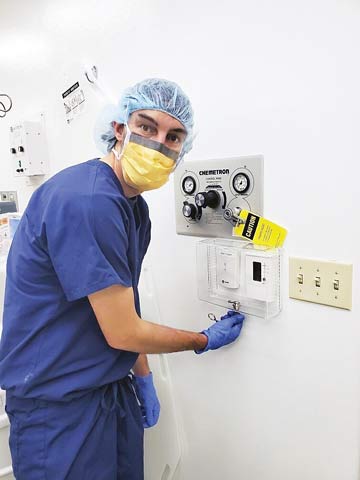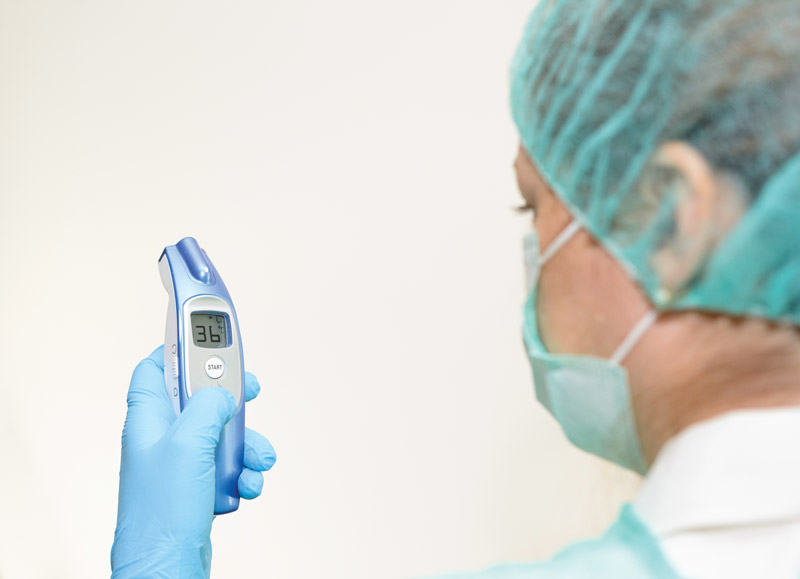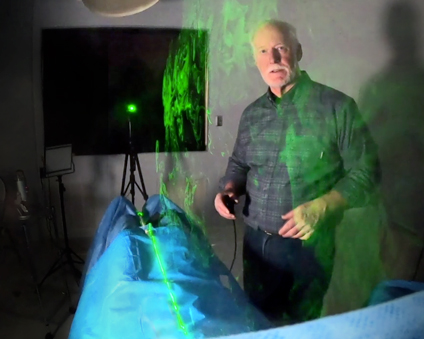Locking up access to the thermostat protects patients exposed to the elements during surgery.
 CREDIT: Miriam Dowling-Schmitt KEEPER OF THE KEY Assigning only one person access to and control of the OR's thermostat protects patients while maintaining order in the room.
CREDIT: Miriam Dowling-Schmitt KEEPER OF THE KEY Assigning only one person access to and control of the OR's thermostat protects patients while maintaining order in the room.
Surgical team members who work hard under hot OR lights often lower the thermostat to keep from overheating. However, their efforts to stay cool during surgery could cause the patients in their care to become hypothermic.
"We've conducted a lot of staff education to make sure they understand patients' needs come before their own," says Miriam Dowling-Schmitt, director of quality at Spectrum Healthcare Partners in Southport, Maine.
Patients lose a significant amount of heat through the surface of exposed skin and open incisions, and cool environments further increase the rate of heat loss. Surgical drapes offer some thermal protection, but active warming methods and maintaining the ambient OR temperature within the AORN-recommended range of 68°F to 73°F help keep patients normothermic.
This all might sound reasonable to the layperson, but administrators know that surgeons and staff are known to argue over and fiddle with OR room temperatures. To avoid arguments breaking out between simmering surgeons and shivering scrub techs, Ms. Dowling-Schmitt suggests covering the thermostat with a lockable plastic box and assigning one staff member to hold onto the key.
That staff member can adjust the thermostat upon request, but also is charged with making sure the room never becomes too warm or too cold. Giving a single person complete control over the thermostat ensures OR temperatures remain consistent, according to Ms. Dowling-Schmitt.
Putting the thermostat under lock and key was part of the enhanced patient warming protocols implemented at one of the surgery centers Spectrum Healthcare Partners manages. Staff there remain vigilant in ensuring patients are normothermic throughout their stay, reports Ms. Dowling-Schmitt. "When staff realize patient warming impacts outcomes, a light goes on," she says. "Their efforts have been extremely gratifying."
.svg?sfvrsn=be606e78_3)



.svg?sfvrsn=56b2f850_5)